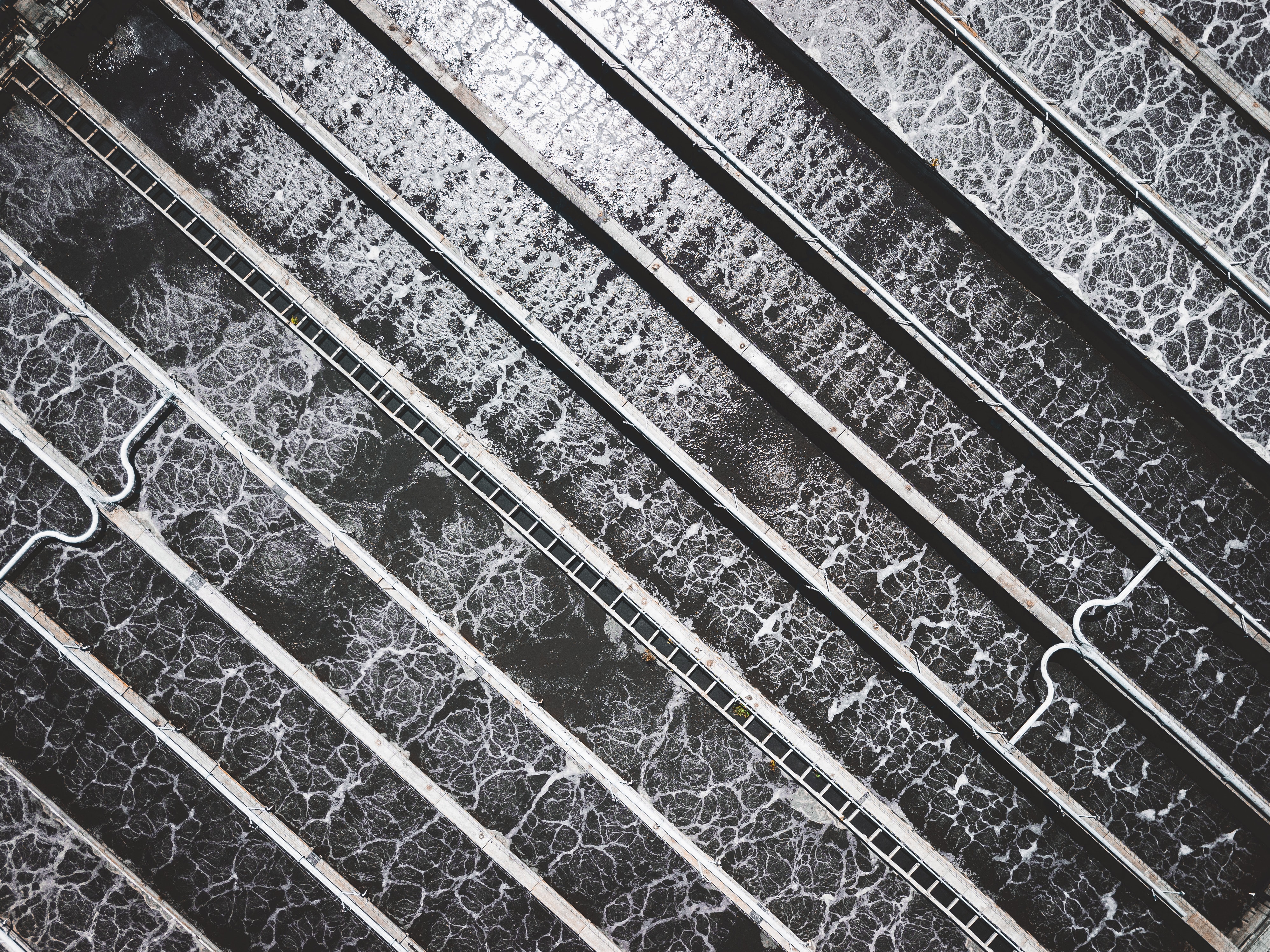 Aeration basins (also called aeration lagoons) perform a vital function in wastewater treatment facilities. But when solids and sludges begin building up it can cause the basin to not run as efficiently. In this article we will take a look at what the aeration process is, the cause and effects of sludge buildup, and how to clean and maintain aeration basins.
Aeration basins (also called aeration lagoons) perform a vital function in wastewater treatment facilities. But when solids and sludges begin building up it can cause the basin to not run as efficiently. In this article we will take a look at what the aeration process is, the cause and effects of sludge buildup, and how to clean and maintain aeration basins.
What is Aeration?
Aeration is the process of adding air into wastewater to allow microorganisms to bio-degrade pollutant components. By pumping air into a tank it allows for microbial growth in the wastewater, which then feeds on organic material. This forms flocks, which settle out into a separate settling tank. Once in a separate settling tank, bacteria form “activated sludge”. Flocks are continually recirculated back into the aeration basin, which increases the rate of decomposition.
Causes of Sludge Buildup
Aeration lagoons are meant to hold sludge and solids, but there are factors that can cause that sludge to build up over time. The age of a lagoon can cause sludge to build up, especially if it is not regularly maintained and cleaned. Lagoons have a 20-year life span, but even with that 20-year life span, lagoons need to be regularly dredged and cleaned of accumulated sludge to ensure effluent levels are optimal.
Another cause can be poor aeration mixing in a lagoon. For example, surface aerators can only mix about 6 feet of the water column. As a result, solids tend to settle at the base of the wastewater lagoon, which causes buildup. Whereas fine bubble aeration systems being elevated off the bottom of the lagoon, tend to leave a dead zone underneath. Sludge can then build up in these dead zones. Depending on which aeration system is being used, this can cause sludge buildup in certain parts of aeration lagoons. Whatever the cause for the sludge buildup in your aeration lagoon, it can have serious negative effects.
Effects of Sludge Buildup
Allowing these sludge buildups can wreak havoc on your aeration basins and cause higher BOD, TSS effluents, and ammonia levels. It can also cause unpleasant odors and noxious gas to escape the confines of the lagoon. If your wastewater treatment facility is close to suburban neighborhoods, this can cause neighbors to become upset, which can reflect poorly on your business. To ensure that your aeration lagoons stay under control, you must regularly clean and maintain them.
Cleaning and Maintenance
In order to remove the sludge buildup in aeration basins, they need to be periodically drained and cleaned out, to ensure optimal performance. There are several technologies that can accomplish this cleaning such as:
Finding the best technology for your aeration basin cleanup depends on several factors such as the size of a project, reduction goals, and budget goals. Handex starts by understanding the problem and coming up with an appropriate solution. Services begin with a preliminary bench scale evaluation of a representative sample to determine the most appropriate and cost-effective dewatering technology. That’s why wastewater treatment plant operators, rely on Handex for their wastewater treatment process cleaning.
About Handex
With Handex, we can handle everything from cleaning, transportation, and disposal offering. As wastewater experts, we will service your needs in a cost-effective manner utilizing the knowledge obtained through our extensive track record of working on a wide variety of sites with site-specific conditions, systems, and regulations. We have the necessary experience to evaluate and assess an existing system on-site and provide recommendations and implementation for system optimization.
For more information about services, we can provide for your wastewater treatment facility, request a free quote today, or contact us here.


